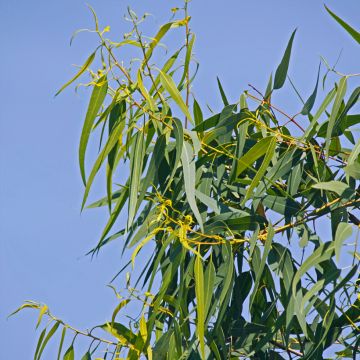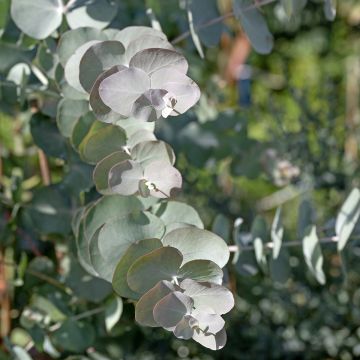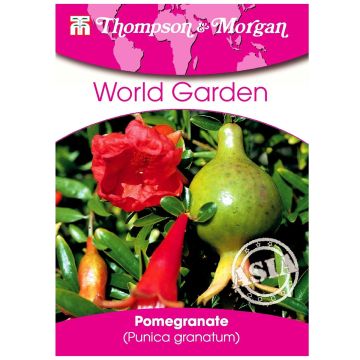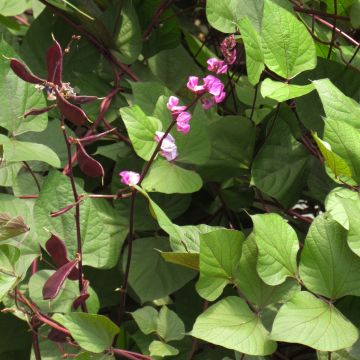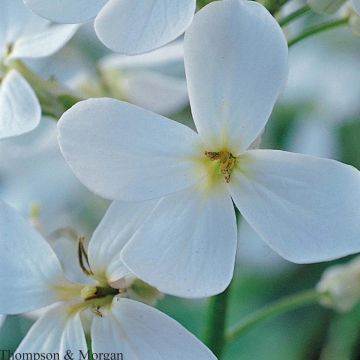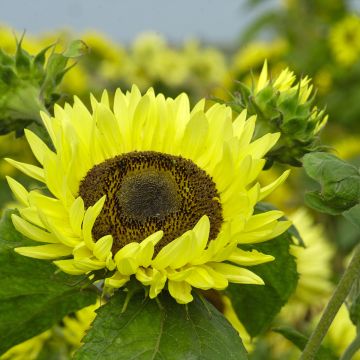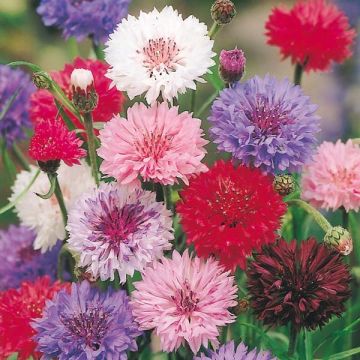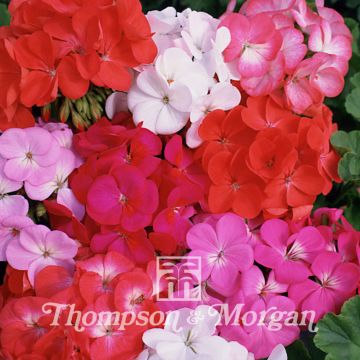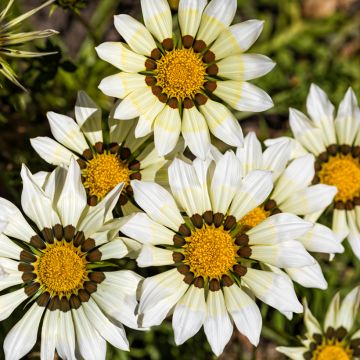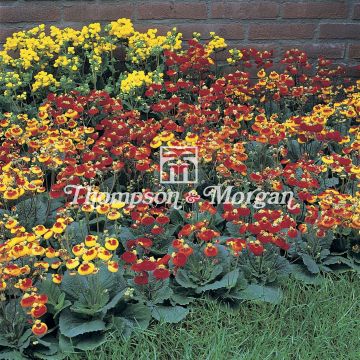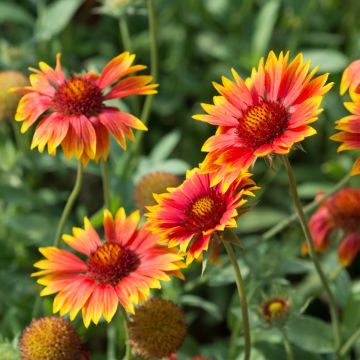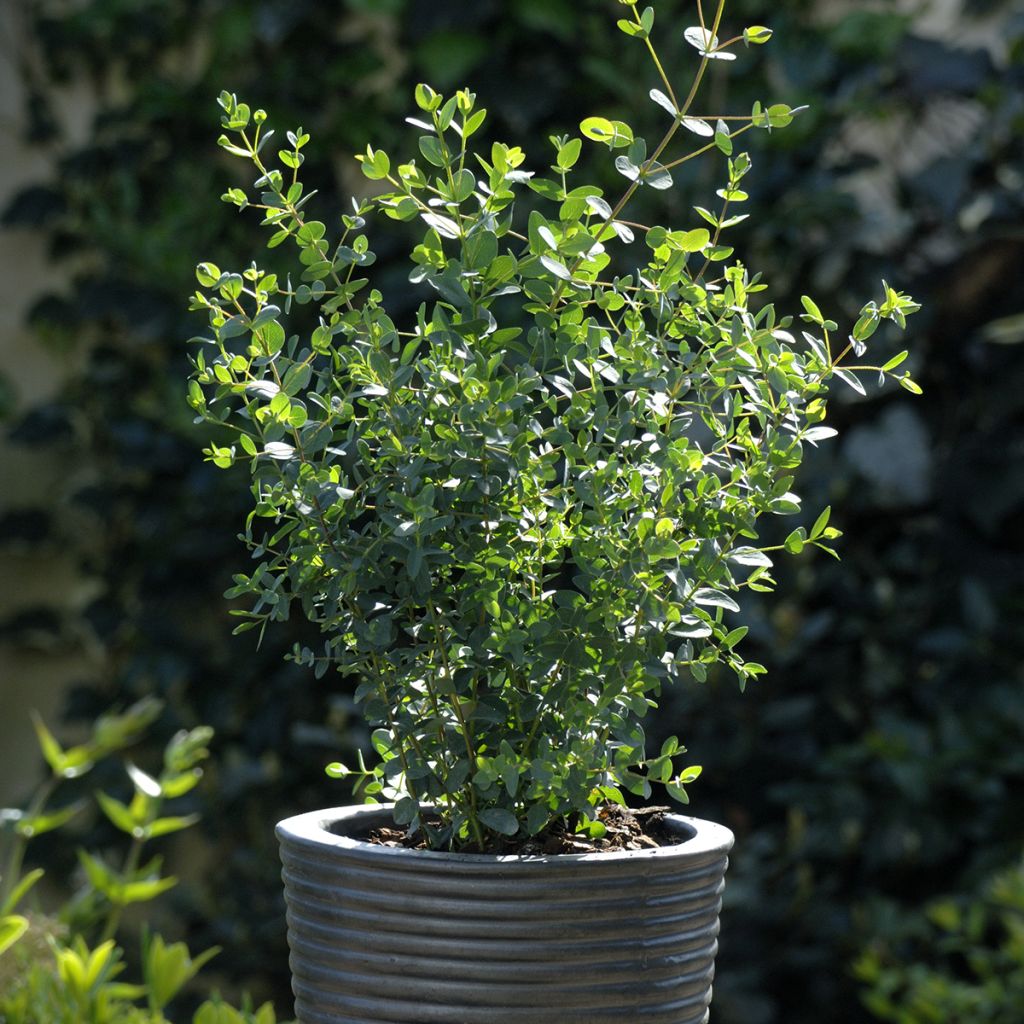

Eucalyptus parvula Boxwood - Small-leaved Gum
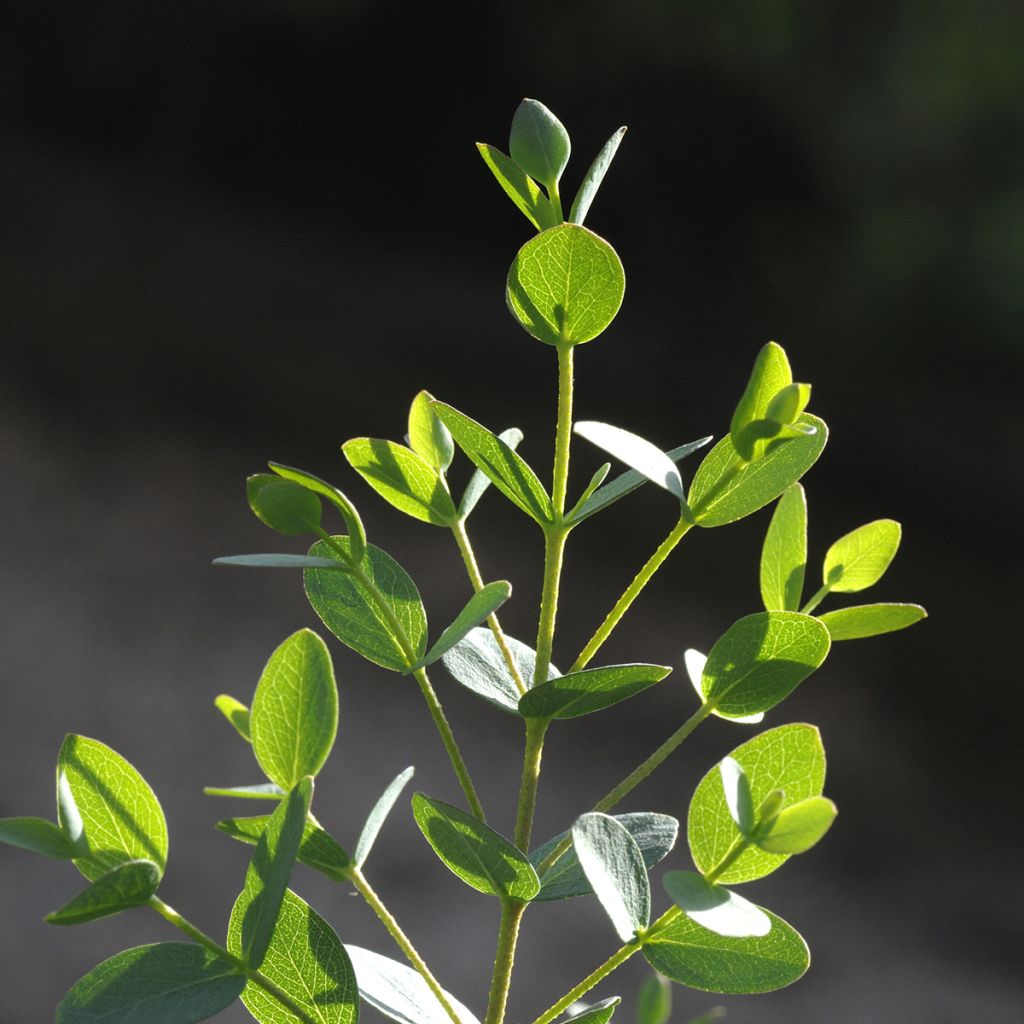

Eucalyptus parvula Boxwood - Small-leaved Gum
Eucalyptus parvula Boxwood - Small-leaved Gum
Eucalyptus parvula Boxwood
Small-leaved Gum
This plant carries a 6 months recovery warranty
More information
We guarantee the quality of our plants for a full growing cycle, and will replace at our expense any plant that fails to recover under normal climatic and planting conditions.
Seed-only orders are dispatched by sealed envelope. The delivery charge for seed-only orders is €3.90.

Does this plant fit my garden?
Set up your Plantfit profile →
Description
The Eucalyptus parviflora (syn. parvula) 'Boxwood' is a selection of the Small-leaved Gum used in floristry for its pretty, highly fragrant small green foliage that repels mosquitoes. It is a small hardy tree, tolerant of a wide range of soils, drought-resistant, and also adaptable to cool and humid summers. If you garden on a terrace or have limited space in your garden, this elegant little eucalyptus is perfect for you. It is robust, low-maintenance, and attractive all year round. In warm climates, it flowers in late summer, autumn, or even winter, in the form of small cream-white pompons.
The Small-leaved Gum is a small tree from the Myrtaceae family, native to the plateaus of New South Wales and the state of Victoria in Australia. This ornamental and easy-to-grow species shows rapid growth and a spreading habit. Relatively small for the genus, this gum tree develops a twisted trunk, with low-branching, topped by a dense, bushy crown that sometimes hangs down to the ground. It will reach a height of 8 to 12m and a spread of 7m at maturity, but can be kept smaller with appropriate pruning. The 'Boxwood' variety has smaller leaves that somewhat resemble those of boxwood, and it has been awarded in England for its ornamental qualities and ease of cultivation.
The Eucalyptus parviflora 'Boxwood' has highly aromatic evergreen foliage. The juvenile leaves are small, dark green, opposite, ovate, and slightly pointed. The adult leaves are larger, olive green, lanceolate-shaped, like sickles. Flowering occurs between late August and November-December in our climates, on plants that are a few years old. They are actually apetalous flowers, spherical, composed of numerous creamy-white stamens tightly packed like pompons, about 1 cm in diameter. They emerge between the leaves, grouped in threes along the branches, and are followed by the formation of large green cone-shaped fruits that turn brown when ripe. The old gray bark peels off each year, remaining decorative for a long period. Unlike other species, Eucalyptus parviflora tolerates heavy and poorly drained, poor and chalky soils, as well as snowy winters.
The 'Boxwood' small-leaved gum can withstand both semi-mountainous and semi-arid climates in summer, and its cold resistance can go down to -18/-20°C. Because of its elegant habit and foliage, it makes a beautiful evergreen screen at the back of borders or on the edges of the garden, including in coastal areas. It adds an exotic touch to the garden, just like some hardy oleanders ('Luteum Plenum', 'Provence', 'Atlas'). However, this small tree is best appreciated when planted on its own. It can also be grown in a large container and pruned back each spring to control its growth.
Report an error about the product description
Eucalyptus parvula Boxwood - Small-leaved Gum in pictures


Flowering
Foliage
Plant habit
Botanical data
Eucalyptus
parvula
Boxwood
Myrtaceae
Small-leaved Gum
Eucalyptus parvifolia Boxwood
Australia
Other Tree seeds
Planting and care
Sowing:
Sow Eucalyptus parvifolia seeds at any time of the year. Germination temperature: about 21 °C.
Sow the seeds on the surface of moistened seed compost, in trays or pots. Light is necessary for germination, barely cover the seeds with a thin layer of vermiculite or do not cover them at all. Enclose your sowings in transparent plastic, and maintain the temperature between 20 and 25 °C. Keep the surface of the compost moist, but not waterlogged. Germination can be slow and erratic, usually taking between 14 and 90 days. If the seeds do not germinate, it is worth exposing them to cold. Place your sowings in the refrigerator for 4 weeks (5°C).
Some gardeners recommend soaking the seeds in cold water for 3 days before sowing them in warm trays (20-22°C).
When they are large enough to handle, transplant your young eucalyptus into 7.5 cm pots in a soilless mix, rich in compost and sand. Grow them like this for a while, then repot them again into 13 cm pots until your plants have reached a sufficient size (40 to 60 cm) to be transplanted outdoors or into large pots. Gradually acclimate your young eucalyptus to cooler growing conditions for a few weeks before setting them outside, once the frost has passed. The young plants must be protected from frost during their first 2 or 3 years of life.
The growth of the seedlings is slow until they reach a height of 20 cm. Once this size is reached, it accelerates significantly.
Cultivation in the ground:
Eucalyptus parvula is preferably planted in early spring in cold regions, and in early autumn in dry and hot climates. Plant it in well-prepared ordinary soil, in a warm and sunny location. It is indifferent to soil type, hardy below -15 °C and does not fear snow. In most of our regions, you will plant it in the ground, possibly improving drainage with coarse sand, pumice or gravel. Then let nature take its course, as growth is quite fast. Water regularly for the first two years, then the shrub can do without watering in summer once it is well established. Fertilisation is not recommended. Pruning is not necessary. However, you can coppice this small tree to form a large bush and limit its height.
Eucalyptus trees are useful for drying out wet areas, as they are heavy water consumers even in winter. However, they are drought-resistant once well established and generally thrive in Mediterranean-type climates.
It is the young plants that take root most easily in the ground. The deep root system of the Eucalyptus does not like to be disturbed. Choose its final location carefully.
Sowing period
Intended location
This item has not been reviewed yet - be the first to leave a review about it.
Flower seeds
Haven't found what you were looking for?
Hardiness is the lowest winter temperature a plant can endure without suffering serious damage or even dying. However, hardiness is affected by location (a sheltered area, such as a patio), protection (winter cover) and soil type (hardiness is improved by well-drained soil).

Photo Sharing Terms & Conditions
In order to encourage gardeners to interact and share their experiences, Promesse de fleurs offers various media enabling content to be uploaded onto its Site - in particular via the ‘Photo sharing’ module.
The User agrees to refrain from:
- Posting any content that is illegal, prejudicial, insulting, racist, inciteful to hatred, revisionist, contrary to public decency, that infringes on privacy or on the privacy rights of third parties, in particular the publicity rights of persons and goods, intellectual property rights, or the right to privacy.
- Submitting content on behalf of a third party;
- Impersonate the identity of a third party and/or publish any personal information about a third party;
In general, the User undertakes to refrain from any unethical behaviour.
All Content (in particular text, comments, files, images, photos, videos, creative works, etc.), which may be subject to property or intellectual property rights, image or other private rights, shall remain the property of the User, subject to the limited rights granted by the terms of the licence granted by Promesse de fleurs as stated below. Users are at liberty to publish or not to publish such Content on the Site, notably via the ‘Photo Sharing’ facility, and accept that this Content shall be made public and freely accessible, notably on the Internet.
Users further acknowledge, undertake to have ,and guarantee that they hold all necessary rights and permissions to publish such material on the Site, in particular with regard to the legislation in force pertaining to any privacy, property, intellectual property, image, or contractual rights, or rights of any other nature. By publishing such Content on the Site, Users acknowledge accepting full liability as publishers of the Content within the meaning of the law, and grant Promesse de fleurs, free of charge, an inclusive, worldwide licence for the said Content for the entire duration of its publication, including all reproduction, representation, up/downloading, displaying, performing, transmission, and storage rights.
Users also grant permission for their name to be linked to the Content and accept that this link may not always be made available.
By engaging in posting material, Users consent to their Content becoming automatically accessible on the Internet, in particular on other sites and/or blogs and/or web pages of the Promesse de fleurs site, including in particular social pages and the Promesse de fleurs catalogue.
Users may secure the removal of entrusted content free of charge by issuing a simple request via our contact form.
The flowering period indicated on our website applies to countries and regions located in USDA zone 8 (France, the United Kingdom, Ireland, the Netherlands, etc.)
It will vary according to where you live:
- In zones 9 to 10 (Italy, Spain, Greece, etc.), flowering will occur about 2 to 4 weeks earlier.
- In zones 6 to 7 (Germany, Poland, Slovenia, and lower mountainous regions), flowering will be delayed by 2 to 3 weeks.
- In zone 5 (Central Europe, Scandinavia), blooming will be delayed by 3 to 5 weeks.
In temperate climates, pruning of spring-flowering shrubs (forsythia, spireas, etc.) should be done just after flowering.
Pruning of summer-flowering shrubs (Indian Lilac, Perovskia, etc.) can be done in winter or spring.
In cold regions as well as with frost-sensitive plants, avoid pruning too early when severe frosts may still occur.
The planting period indicated on our website applies to countries and regions located in USDA zone 8 (France, United Kingdom, Ireland, Netherlands).
It will vary according to where you live:
- In Mediterranean zones (Marseille, Madrid, Milan, etc.), autumn and winter are the best planting periods.
- In continental zones (Strasbourg, Munich, Vienna, etc.), delay planting by 2 to 3 weeks in spring and bring it forward by 2 to 4 weeks in autumn.
- In mountainous regions (the Alps, Pyrenees, Carpathians, etc.), it is best to plant in late spring (May-June) or late summer (August-September).
The harvesting period indicated on our website applies to countries and regions in USDA zone 8 (France, England, Ireland, the Netherlands).
In colder areas (Scandinavia, Poland, Austria...) fruit and vegetable harvests are likely to be delayed by 3-4 weeks.
In warmer areas (Italy, Spain, Greece, etc.), harvesting will probably take place earlier, depending on weather conditions.
The sowing periods indicated on our website apply to countries and regions within USDA Zone 8 (France, UK, Ireland, Netherlands).
In colder areas (Scandinavia, Poland, Austria...), delay any outdoor sowing by 3-4 weeks, or sow under glass.
In warmer climes (Italy, Spain, Greece, etc.), bring outdoor sowing forward by a few weeks.


































